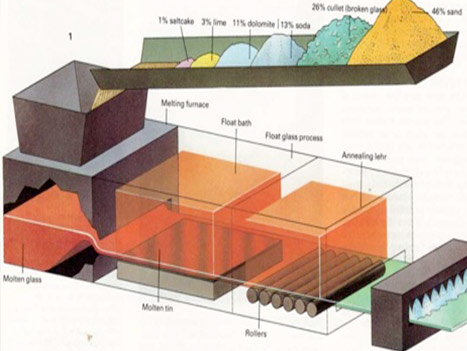Caring for your Glass
Scratching and the Apparent “Softness” of Tempered Glass.
Glass manufacturers all abide to stringent manufacturing processes and quality requirements.
Architectural flat glass, whether tempered or annealed has the same relative “hardness”. It has been scientifically proven that here is no difference in hardness between the two.
Glass is scratched by abrading the surface. Grit, dirt, metal filings, etc. can all contribute to scratching glass surfaces. Anytime something contacts the surface of glass in a wiping motion that has even the slightest amount of dirt or debris on it, such as gloved hands, wiping cloths, clothing, squeegees, foam etc., there is the opportunity for the glass to be scratched. Imagine what would happen to your car if you cleaned it with a sponge without a lot of water. The dirt between your sponge and the car would drag across the car surface leaving scratches. If there isn’t enough “cushion” (i.e. water), between the glass and what is touching it, scratching will almost always occur.
Scratching of flat glass within the secondary manufacturing processes (cutting, edging, tempering, etc.) happens but has specific telltale appearances. Common scratching in this environment are straight line scratches caused by particles trapped inside glass processing equipment and abrading the glass parallel with the direction of travel through particular machinery, leaving straight line scratches. These will usually not cover the majority of the glass surface.
Other common scratches occurring within the manufacturing process will be random, curved and localized to one area of the glass, often due to the physical handling of glass by manufacturing staff. It is extremely rare in a manufacturing environment to find random scratching covering large areas of a piece of glass, since there are no manufacturing processes that contact the glass in that manner.
Common scratches observed at job sites, particularly once the glass is installed, usually come from two sources: firstly; people rubbing clothing, equipment and materials against the surface of the unprotected glass and secondly from glass cleaning.
Extensive random, arced scratching is occasionally observed during final inspections, when there was no evidence of the scratching when the glass arrived at the jobsite. This type of scratching will most probably have occurred when someone has attempted to clean the glass. The Glass Association of North America has a comprehensive guideline for cleaning architectural glass which should be followed to ensure the glass is not being scratched during the cleaning process. These guidelines should be followed whenever cleaning flat architectural glass.







